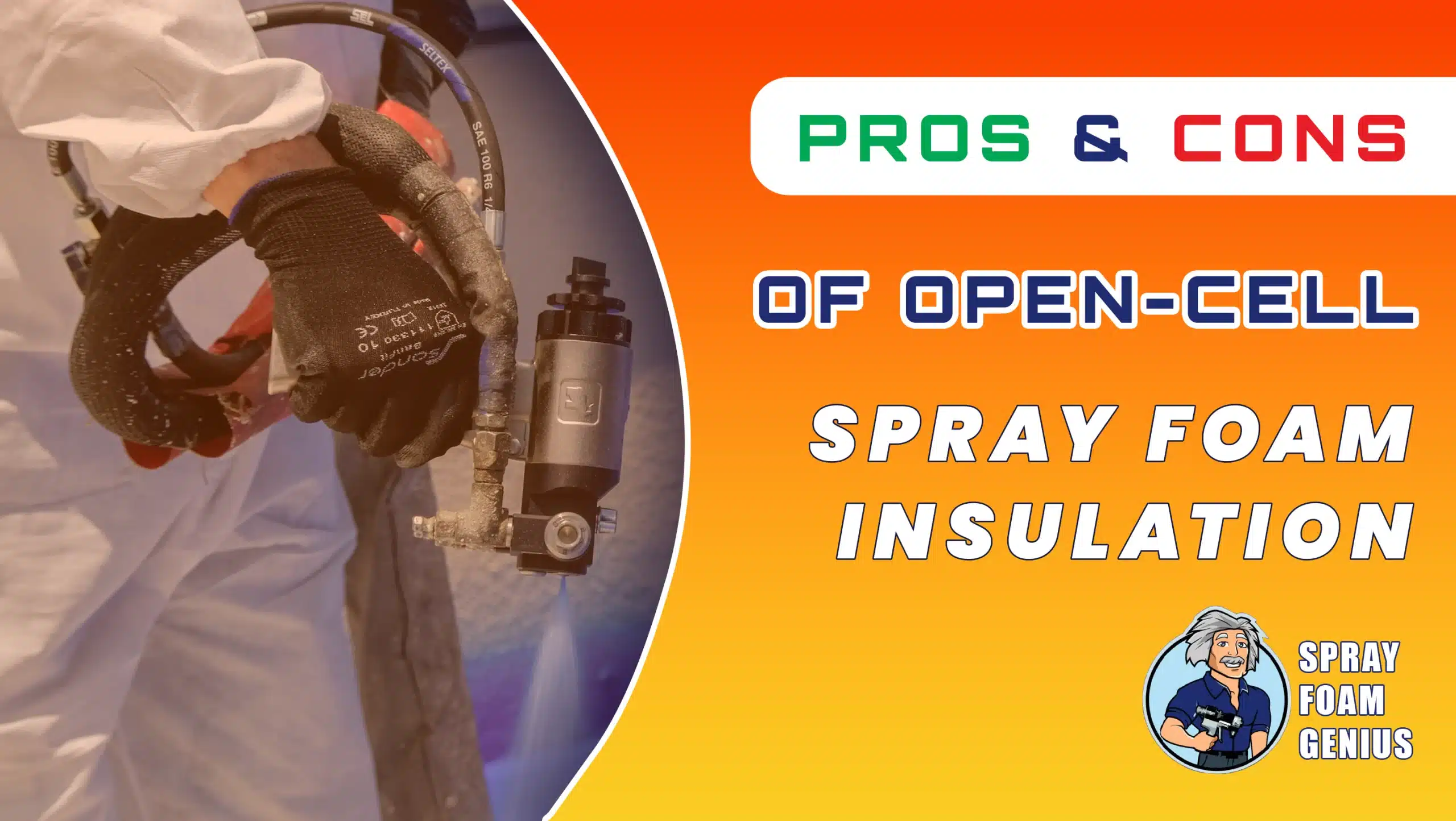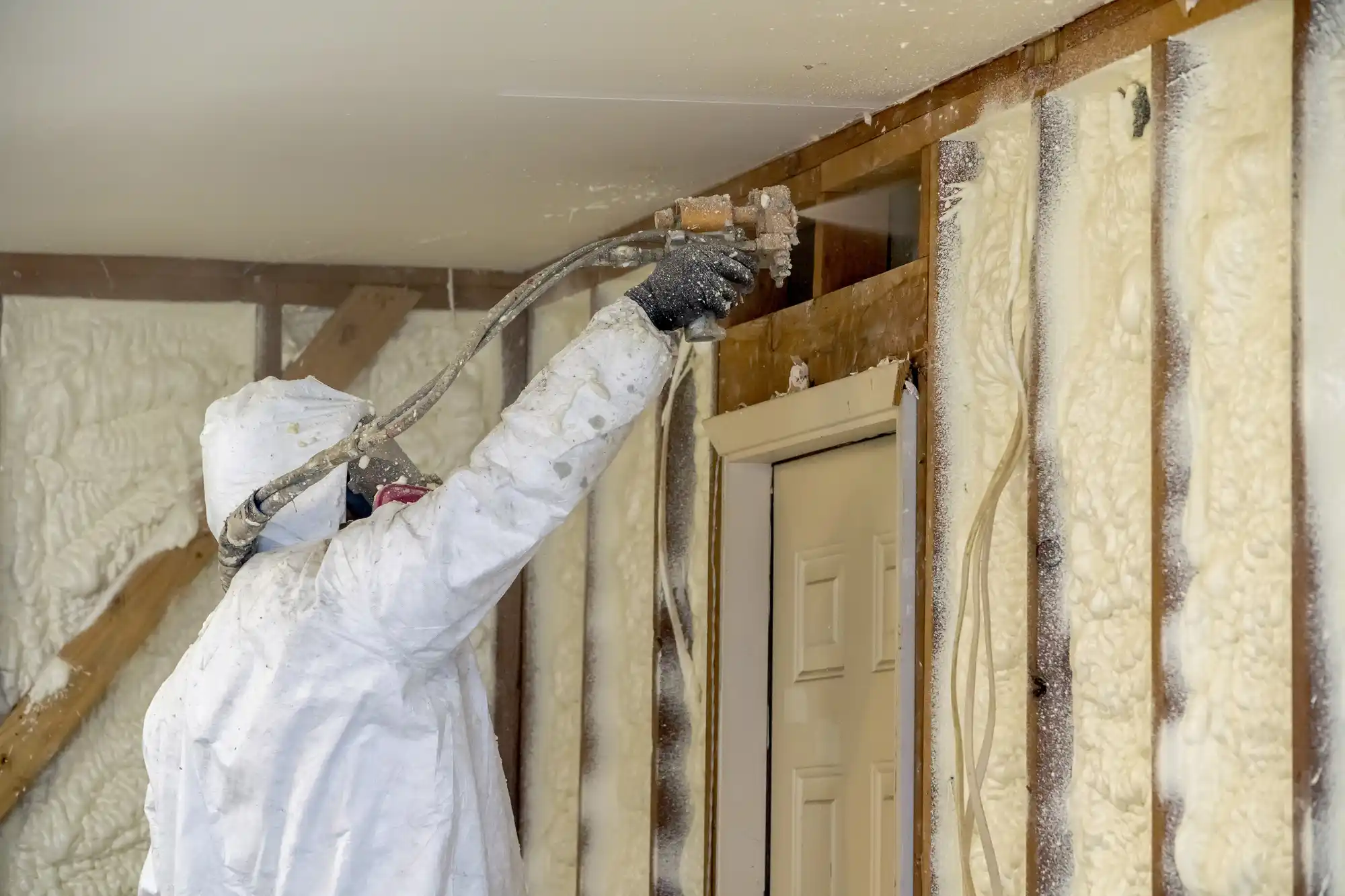
When it comes to insulation, open-cell spray foam is a popular choice for many homeowners and contractors due to its effectiveness and flexibility. However, like any building material, it has its strengths and weaknesses. Understanding these pros and cons can help you make an informed decision about whether open-cell spray foam insulation is the right choice for your project. In this comprehensive guide, we’ll explore the advantages and disadvantages of open-cell spray foam insulation to give you a clear picture of its potential benefits and limitations.
What is Open-Cell Spray Foam Insulation?
Open-cell spray foam insulation is a type of polyurethane foam that is applied as a liquid and expands upon application. This expansion creates a soft, spongy foam that fills gaps, cracks, and voids, forming a continuous barrier against air and moisture. The foam is characterized by its lower density and open-cell structure, which means it contains a significant amount of air within its cells.
This type of insulation is commonly used in residential and commercial applications due to its versatility and effectiveness in enhancing energy efficiency and comfort. However, it’s important to weigh its advantages and disadvantages to determine if it’s suitable for your specific needs.
The Pros of Open-Cell Spray Foam Insulation
1. Effective Air Barrier
One of the standout features of open-cell spray foam insulation is its ability to function as a highly effective air barrier. When applied, the foam expands and adheres to surfaces, filling gaps and cracks that can lead to air leaks. This creates a tight seal that prevents drafts and reduces the amount of outside air entering the building. As a result, open-cell spray foam insulation can contribute to improved indoor comfort and lower energy bills by reducing the need for heating and cooling.
2. Soundproofing Qualities
Open-cell spray foam insulation is known for its sound-dampening properties. The foam’s soft and flexible structure helps absorb and reduce sound transmission, making it an excellent choice for areas where noise control is important. Whether you’re looking to create a quieter home environment, soundproof a media room, or reduce noise between apartments, open-cell foam can help improve acoustics by minimizing sound leakage.
3. Lower Cost Compared to Closed-Cell Foam
Typically, open-cell spray foam insulation is more cost-effective than its closed-cell counterpart. The lower density of open-cell foam means it is less expensive to produce and install. For many homeowners and builders working within a budget, this can make open-cell spray foam a more affordable option while still providing good insulation performance.
4. Ease of Application
Open-cell spray foam is relatively easy to apply, even in challenging or irregularly shaped areas. The foam adheres well to most surfaces and expands to fill gaps and voids effectively. This ease of application can lead to faster installation times and potentially lower labor costs compared to some other insulation types. Additionally, because the foam expands upon application, it can reach difficult-to-insulate areas that other materials might struggle with.
5. Environmental Benefits
Many open-cell spray foam products are formulated with environmentally friendly blowing agents that have a reduced impact on the ozone layer compared to older formulations. Some products are even made from renewable resources, contributing to more sustainable building practices. Choosing open-cell foam that adheres to green standards can help you make a more environmentally responsible choice for your insulation needs.
6. Improved Indoor Air Quality
By sealing gaps and preventing air leaks, open-cell spray foam insulation helps improve indoor air quality. It reduces the infiltration of outdoor pollutants, allergens, and dust, which can contribute to a healthier living environment. Properly installed open-cell foam can help minimize the presence of these contaminants, making it a good choice for people with allergies or respiratory concerns.
The Cons of Open-Cell Spray Foam Insulation

1. Lower R-Value Compared to Closed-Cell Foam
One of the main drawbacks of open-cell spray foam insulation is its lower R-value per inch compared to closed-cell spray foam. The R-value is a measure of thermal resistance, and while open-cell foam still provides effective insulation, it is not as efficient as closed-cell foam in terms of insulating value. This means that for the same thickness, open-cell foam offers less resistance to heat flow. In regions with extreme temperature variations or where higher insulation values are required, this could be a limiting factor.
2. Moisture Sensitivity
Open-cell spray foam is more susceptible to moisture absorption than closed-cell foam. While it can act as a vapor retarder, it is not entirely waterproof. In areas prone to high humidity or potential water exposure, open-cell foam may absorb moisture, which could lead to issues such as mold growth or reduced effectiveness over time. It is important to ensure that the foam is applied in environments where moisture exposure is minimal or that appropriate measures are taken to manage moisture.
3. Durability Concerns
The soft and flexible nature of open-cell spray foam means it may be less durable compared to rigid closed-cell foam. This can be a consideration in high-traffic areas or places where physical impact is a concern. The foam might be more prone to damage from everyday wear and tear, which could affect its performance and longevity. Additionally, open-cell foam does not provide the same level of structural support as closed-cell foam, which might be important in certain applications.
4. Potential for Off-Gassing
Like many building materials, open-cell spray foam can release volatile organic compounds (VOCs) during and shortly after installation. Off-gassing refers to the release of these chemicals into the air, which can affect indoor air quality. While many modern spray foam products are formulated to meet low-VOC standards, it is still important to ensure proper ventilation during and after installation to minimize exposure to these compounds.
5. Limited Use in Certain Applications
Due to its moisture sensitivity and lower R-value, open-cell spray foam may not be suitable for all applications. For instance, it is generally not recommended for exterior applications or in areas with significant moisture exposure, such as basements or crawl spaces. Closed-cell foam or other insulation materials might be more appropriate for these scenarios. Additionally, in regions with extreme weather conditions or where higher insulation performance is needed, open-cell foam might not provide the necessary protection.
Making the Right Choice for Your Project
When deciding whether open-cell spray foam insulation is the right choice for your project, consider the following factors:
- Budget: If cost is a significant concern, open-cell spray foam offers an affordable solution with good performance for many applications. It provides effective insulation and air sealing at a lower price point compared to closed-cell foam.
- Thermal Resistance: If higher R-values are necessary, especially in areas with extreme temperature fluctuations, closed-cell spray foam might be a better option. It provides superior thermal resistance and is better suited for applications requiring high insulation values.
- Moisture Exposure: For areas prone to high humidity or potential moisture issues, closed-cell foam offers better moisture resistance. Open-cell foam may not be suitable for environments where moisture exposure is a concern.
- Soundproofing Needs: If noise reduction is a priority, open-cell spray foam can provide good soundproofing qualities. It is particularly effective for interior applications where sound control is important.
- Application Ease: Open-cell spray foam is relatively easy to apply and can reach challenging or irregularly shaped areas effectively. This can make it a practical choice for many insulation projects.
Elevate Your Business Today!
Open-cell spray foam insulation offers a range of benefits, including effective air sealing, soundproofing qualities, and cost savings. However, it also has some limitations, such as lower R-value and moisture sensitivity. By understanding these pros and cons, you can make an informed decision about whether open-cell spray foam is the right choice for your insulation needs.
At Spray Foam Genius Marketing, we specialize in providing SEO and digital marketing services exclusively for spray foam insulation contractors. If you’re a contractor looking to enhance your online presence and attract more clients,Call us at 877-840-FOAM for USA and 844-741-FOAM for Canada visit our website at sprayfoamgeniusmarketing.com, or email us at [email protected] to get started.
Let us help you grow your business and stand out in the competitive insulation market.
- 5 Google My Business Hacks to Double Your Leads for Spray Foam Insulation Contractors - January 14, 2025
- Why Spray Foam Contractors Cannot Ignore Reputation Management in 2025 - January 13, 2025
- Local SEO Secrets Every Spray Foam Contractor Must Know to Win in 2025 - January 13, 2025

